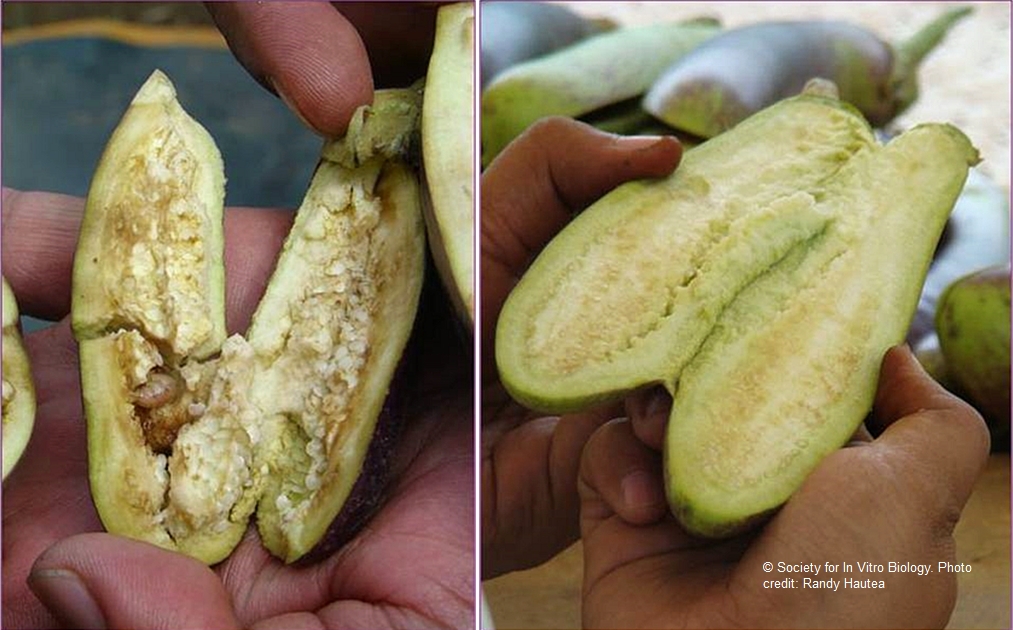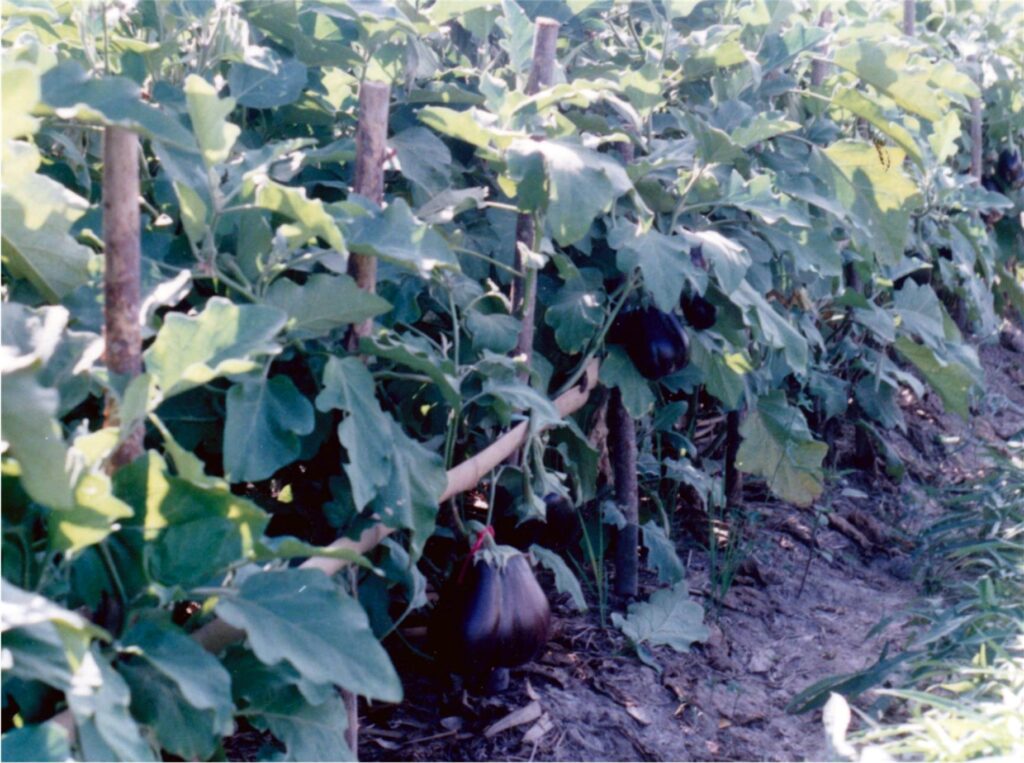Text by Henrylito D. Tacio
Photos courtesy of SEARCA
If someone mentions “biotechnology,” what comes to mind immediately? Any of the following: Dolly the cloned sheep, genetically modified organisms (GMOs), golden rice—or all of them.
If that’s what you think, you’re absolutely right. These are all examples of biotechnology. But what about beer-brewing, crop breeding, wine, cheese, and vinegar? These processes and products—some of which have been around for thousands of years—are also examples of biotechnology.
The making of patis (fish sauce), soy sauce, nata de coco, and even composting in your backyard is also a biotechnological process. Antibiotic penicillin, insulin for the treatment of diabetes, and vaccines for measles, hepatitis B, and rabies are all products of biotechnology, too.
The Merriam-Webster dictionary defines biotechnology as “the manipulation (as through genetic engineering) of living organisms or their components to produce useful usually commercial products (as pest resistant crops, new bacterial strains, or novel pharmaceuticals).”
Although it has been with us since time immemorial—the “manna” mentioned in the Old Testament is also a product of biotechnology—the term (often abbreviated as “biotech”) now generally refers to gene engineering technology that revolutionized biological science since 1973.
MORE FOOD, LESS LAND
“Biotechnology is one of the tools necessary in helping farmers grow more food on less land,” said the late Dr. Randy Hautea, who was then the global coordinator of Laguna-based International Service for the Acquisition of Agri-Biotech Applications (ISAAA).
“However, the promises of biotech crops can only be unlocked if farmers are able to buy and plant these crops, following a scientific approach to regulatory reviews and approvals,” Hautea added.

In the Philippines, the only agricultural crop that is genetically modified is biotech corn. Soon to be released in the golden rice, the beta-carotene biofortified genetically modified cereal was developed by the International Rice Research Institute in collaboration with the Philippine Rice Institute.
Still, another is the Bt talong, an eggplant that is spliced with “Bacillus thuringiensis” (Bt). A common soil bacterium, Bt, produces a protein that paralyzes the larvae of some harmful insects.
One pest that causes so much damage to eggplants is the eggplant fruit and shoot borer (EFSB). It feeds almost exclusively on eggplant. An entire crop can be lost from EFSB infestation.
“The worm of the insect bore tunnels in the fruit, rendering them unfit for consumption,” said Dr. Emil Q. Javier, former secretary of the Department of Science and Technology (DOST) and now a national scientist.
Some studies have shown that 51-73% of the crop is lost when there is no control of any form is done. There is also no known genetic resistance to EFSB in cultivated and wild eggplants.
“The insects are concealed in the shoots and fruits and are difficult to reach,” Dr. Javier explained. “Thus, in order to protect their crops, farmers spray their plants almost every other day with insecticides.”
CHEMICAL INSECTICIDES
Edgar C. Talasan is a vegetable farmer from Barangay Imalutao in Impasug-ong, Bukidnon. He said in his 15 years of vegetable farming, in every eggplant cropping cycle, he sprayed at least twice a week. For every 1,000 eggplant hills, he uses 0.5 kilograms of Lannate, two bottles (250 mL) of Prevathon, two bottles (250 mL) of Alika, one liter of Karate, one kilogram of Daconil, and 0.5 liters of Selecron.
Dr. Emiliana Bernardo, an entomologist or a scientist who studies insects, said the current methods used by some eggplant growers in controlling the EFSB are unacceptable. She added that the practice is also unhealthy to consumers, farmers, and the environment.
She reported that studies conducted in major eggplant-producing provinces found that almost all farmers use chemical insecticides and that some even dip the unharvested eggplant fruits in a mix of chemicals just to ensure that harvests are marketable.
But there are also farmers who don’t use chemicals to destroy the pest. They do so by doing any of the following: manual removal of infested shoots, crop rotation, intercropping, using nylon net barriers, trapping of the male using pheromones, applied either singly or in an integrated manner. But all these are “labor-intensive and generally ineffective,” to quote the words of Dr. Asuncion K. Raymundo and Dr. Rita P. Laude, who conducted some studies on eggplant.
BIOLOGICAL INSECTICIDE
One possible solution to the problem is to introduce Bt into the vegetable crop. The Institute of Plant Breeding at the University of the Philippines at Los Baños (UPLB) spearheaded the development of Bt talong.
“Bt talong was developed by genetically engineering a gene from the bacteria so that the GM eggplants now produce a protein that defends it against insect attacks,” explained Dr. Michael Purugganan, a Filipino plant geneticist who is the Dean of Science at the New York University.

Bt is present in the Philippine soil and has been in use for years without any harmful effects. As it comes from the earth itself, Bt is very natural, according to Dr. Bernardo. In 1901, Bt was discovered to have an insecticidal property. By the 1950s, it became a well-known biological insecticide.
In her landmark novel Silent Spring, Rachel Carson recommended Bt as a biological pesticide because it has much less environmental impact than conventional chemical pesticides.
Research on Bt talong commenced in 2003 in the UPLB laboratory. From 2007 to 2009, a contained experiment was conducted under the supervision of the National Biosafety Committee of the Philippines. From 2010 to 2012, field trials were done in Laguna, Pangasinan, Camarines Sur, and North Cotabato.
NO TO Bt TALONG
A field trial was also conducted at UP Mindanao in Davao City. But on December 13, 2010, Mayor Sara Z. Duterte-Carpio ordered the uprooting of around 1,800 hills of Bt talong in an experimental station inside the campus.
“(Based) on the report of the Davao (City Agriculture Office),” said the mayor’s cease and desist order, “you have only complied with three of 15 conditions that enables you to engage in such field testing.”
That was a big blow to Bt talong. But the biggest letdown came on May 17, 2013, when the Supreme Court (SC) decided to permanently halt the field testing of Bt talong based on the petition filed by Greenpeace Philippines and Magsasaka at Siyentipiko para sa Pag-unlad ng Agrikultura.
“The testing or introduction of Bt talong into the Philippines, by its nature and intent, is a grave and present danger to (and an assault on) the Filipinos’ constitutional right to a balanced ecology, because in any book and by any yardstick, it is an ecologically unbalancing event or phenomenon,” read the SC decision.
According to Dr. Eufemio Rasco, Jr., an academician at the National Academy of Science and Technology, the decision was based on the “precautionary principle.” It stated: “Where there are potential adverse effects (of a technology), lack of full scientific certainty shall not be used as a reason for postponing appropriate measures to prevent environmental degradation.”
While the petitioners were “overjoyed on the decision” of the SC, Dr. Javier believed the real losers are the poor farmers themselves and the consuming public. “Our small farmers are deprived of modern means of raising productivity, competitiveness, and incomes,” he wrote. “They are denied potential sustainable farming technologies that can substantially reduce the need for harmful pesticides to protect their crops.
“Big losers as well are the low-wage-income consumers who are ultimately penalized with high food prices and excessive pesticide residues in the food they eat,” Dr. Javier added.
REVERSAL
Fortunately, on July 26, 2016, the SC en banc unanimous reversed its previous ruling. The SC decision further stated that since no commercial propagation of Bt talong took place and research activities never went beyond the field trial phase, “any future threat to the public to a healthful and balanced ecology is more imagined than real.”
All’s well, the end’s well, so goes the saying. “With the field trials of Bt talong already completed, confirming the efficacy of the technology against the fruit and shoot borer and its safety towards beneficial and non-target insects, and with the unanimous ruling of the SC reversing its earlier decision against field tests, immediate commercial release should be considered by its developer,” suggested Dr. Panfilo G. De Guzman, an associate scientist at ISAAA.
Meanwhile, a recent study showed that Bt talong could bring health cost savings of P9.33 million yearly from its nearly pesticide-free use. It does not benefit only the health of consumers but also of farmers, beneficial insects, farm animals, and birds.
Researcher Sergio R. Francisco has estimated savings in a survey of long exposed to pesticide spraying against the highly-infesting EFSB in his study, “Health and Environmental Impacts of Bt Eggplant.”
The study was based on the perception of 100 eggplant farmers from Batangas, Nueva Ecija, Pangasinan, and Quezon, who sprayed their eggplant. These farmers have a long experience in farming—from 9.96 to 18.04 years.
In a press statement, it was disclosed that the benefit to human health from health cost savings in growing Bt talong is equivalent to P2.49 million yearly as risk from illnesses is avoided. For farm animals, the projected benefit per year is at P2.12 million.
For beneficial insects, the environmental benefit is valued at P2.45 million yearly, and for bird species, P2.27 million—as these are saved from death, thereby contributing to biodiversity enhancement.
One asks: Is the Bt protein found in Bt talong safe to non-target organisms? On tests conducted on dogs, guinea pigs, rats, fish, frogs, and even birds, the Bt protein was found not to have any harmful effects, according to Extension Toxicology Network, a pesticide information project of several US universities.
“The specificity of Bt for its target insects is one of the characteristics that make it an ideal method of biological pest control,” said a briefing paper published by ISAAA. “The specificity rests on the fact that the toxicity of the Bt protein is receptor-mediated. This means that for an insect to be affected by the Bt protein, it must have specific receptor sites in its gut where the proteins can bind. Fortunately, humans and the majority of beneficial insects do not have these receptors.”
According to Dr. Bernardo, cooking the Bt talong can completely denature the Bt protein. “It is non-detectable in any cooked food therefore there is no human exposure to Bt proteins in eating cooked Bt crops,” she said.

